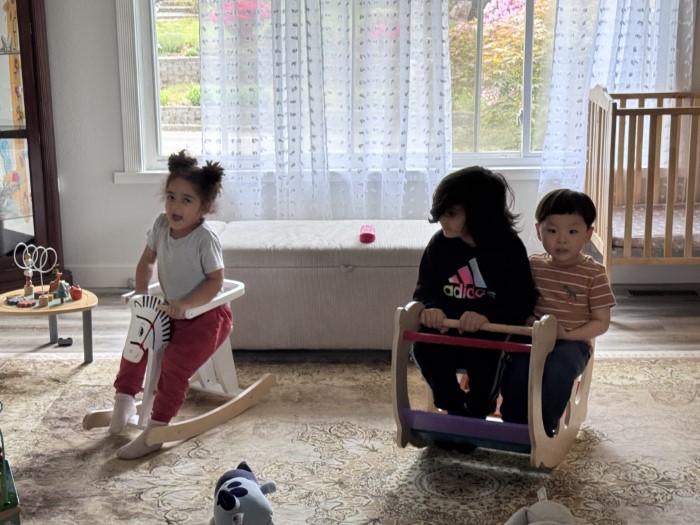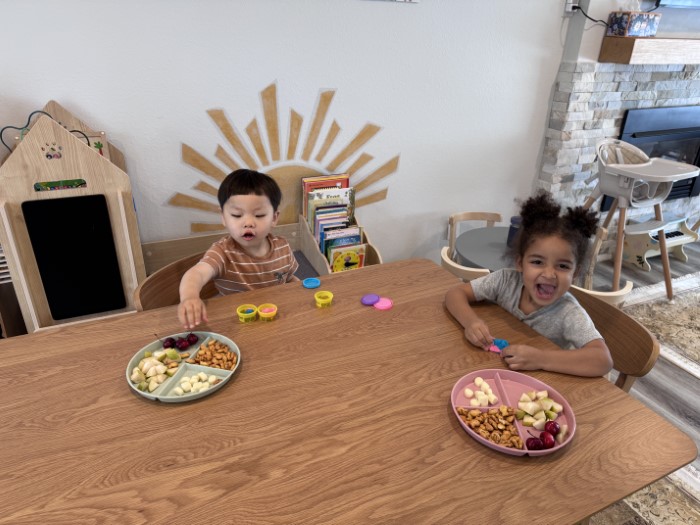Incorporating multicultural education in daycare and child care settings helps children embrace diversity from a young age. By introducing cultural diversity through songs, family traditions, and inclusive activities, childcare providers can foster cultural sensitivity and inclusivity for infants to preschoolers. These practices build empathy, respect, and global awareness, creating a welcoming environment for all. At Kido Heaven, our daycare and child care in Bothell programs prioritize cultural sensitivity to nurture young minds. Read on to learn practical strategies for creating a diverse childcare environment.
Introduction to Multicultural Education in Childcare
In today’s diverse world, multicultural childcare is essential for fostering inclusivity and cultural sensitivity in young children. By introducing early childhood diversity through songs, family traditions, and inclusive activities, daycare and child care providers can create environments where every child feels valued. At Kido Heaven, our daycare and child care programs in Bothell emphasize cultural sensitivity to help children develop empathy and respect for others. This article explores practical strategies for incorporating multicultural education into childcare settings, ensuring infants to preschoolers grow up with an appreciation for diversity.
Why Multicultural Education Matters in Early Childhood
Benefits for Social and Emotional Development
Exposing children to diverse cultures in daycare settings enhances their social and emotional growth. According to the National Association for the Education of Young Children (NAEYC), children in diverse environments develop stronger communication skills, empathy, and collaboration. Engaging in toddler cultural activities or preschooler inclusion projects helps children understand different perspectives, reducing prejudice and fostering kindness.
Building Cultural Awareness Early
Early childhood is a critical time for shaping attitudes. By introducing infant care and toddler programs that celebrate diversity, childcare providers lay the foundation for lifelong cultural awareness. Children who learn about different cultures early are more likely to become inclusive adults, contributing to a more equitable society.

Practical Ways to Incorporate Multicultural Education
Using Songs to Introduce Cultural Diversity
Songs are a powerful tool for introducing cultural diversity in child care settings. Simple lullabies or folk songs from various cultures, such as African call-and-response chants or Spanish nursery rhymes, engage young children while teaching them about different languages and rhythms. For example, singing “Itsy Bitsy Spider” alongside a Japanese folk song like “Tulips” (Tulippu ascendedSource) introduces children to new sounds and traditions. Music also supports language development and emotional bonding.
Incorporating Family Traditions in Activities
Inviting families to share their cultural traditions creates meaningful connections in the classroom. For instance, a parent might teach a traditional recipe, like Mexican tamales or Indian samosas, during a cooking activity. Another idea is a “family culture board” where children display photos or drawings of their family’s traditions. These activities foster pride in their heritage and curiosity about others.
Storytelling and Books for Cultural Learning
Storytelling is an effective way to teach cultural sensitivity. Books like The Name Jar by Yangsook Choi or All Are Welcome by Alexandra Penfold introduce children to diverse cultures and experiences. Reading sessions can spark discussions about similarities and differences, encouraging empathy. Choose authentic, culturally accurate books to avoid stereotypes and promote understanding.
Celebrating Multicultural Holidays and Events
Celebrating holidays like Diwali, Lunar New Year, or Kwanzaa in daycare settings introduces children to global traditions. Age-appropriate activities, such as making paper lanterns for Lunar New Year or rangoli art for Diwali, engage children creatively. Ensure celebrations are authentic by consulting with families or cultural experts to avoid misrepresentation.
Age-Specific Strategies for Multicultural Learning
Infants: Sensory-Based Cultural Exposure
For infant care, multicultural education focuses on sensory experiences. Playing multilingual lullabies, such as French Frère Jacques or Spanish Cielito Lindo, introduces infants to diverse sounds. Textured fabrics or toys inspired by global cultures, like African patterned cloths, stimulate curiosity and comfort. These subtle introductions lay the groundwork for cultural awareness.
Toddlers: Interactive Cultural Activities
Toddler cultural activities should be interactive and play-based. Dancing to global music, such as Brazilian samba or Indian bhangra, encourages movement and cultural appreciation. Simple art projects, like creating flags from different countries, engage toddlers’ creativity while introducing new symbols and colors.
Preschoolers: Inclusive Group Projects
Preschooler inclusion thrives in collaborative projects. For example, children can create a “world map” by marking their families’ countries of origin with stickers or drawings. Group activities like designing a multicultural quilt with fabric squares from various cultures foster teamwork and respect. These projects teach children to value diversity while working together.
Creating an Inclusive Childcare Environment
Training Staff in Cultural Sensitivity
Cultural sensitivity starts with well-trained staff. Childcare providers should participate in workshops on cultural competence, such as those offered by NAEYC or local community organizations. Training helps staff recognize unconscious biases and create inclusive classrooms where every child feels seen and heard.
Engaging Families in Multicultural Education
Families are key partners in multicultural childcare. Send home surveys to learn about each family’s cultural background and traditions. Host events like “culture nights” where families share stories, foods, or crafts. This engagement builds trust and ensures authentic representation of diverse cultures.
Designing Culturally Responsive Spaces
A culturally responsive classroom reflects diversity in its decor and materials. Display multilingual posters, global artwork, or toys representing different cultures, such as dolls with diverse skin tones or international musical instruments. Ensure the space is welcoming to all families, with accessible signage and translated materials where possible.

Challenges and Solutions in Multicultural Childcare
Addressing Bias and Stereotypes
Unconscious bias can undermine cultural sensitivity efforts. For example, assuming all Asian families celebrate the same holidays can perpetuate stereotypes. Address this by training staff to ask open-ended questions and listen to families’ unique experiences. Open discussions during staff meetings can help identify and correct biases.
Overcoming Resource Limitations
Limited budgets can make it challenging to access diverse materials. Partner with local cultural organizations or libraries for free or low-cost resources, such as books or guest speakers. Online platforms like Epic! or Teaching Tolerance offer affordable multicultural lesson plans and activities for daycare settings.
Conclusion: Building a Foundation for Inclusivity
Incorporating multicultural education in daycare and child care settings creates a foundation for inclusivity that lasts a lifetime. By using songs, family traditions, storytelling, and inclusive activities, childcare providers can foster cultural sensitivity and empathy in young children. These efforts help infants, toddlers, and preschoolers grow into compassionate, globally aware individuals. At Kido Heaven, our daycare and child care programs in Bothell integrate multicultural childcare to create welcoming environments for all. Visit Kido Heaven to learn more about our approach to fostering early childhood diversity.
Why KidoHeaven Stands Out
✅ Licensed in Washington State
✅ Aligned with Early Achievers standards
✅ Working Connections subsidy accepted
✅ Daily updates via Brightwheel
✅ Located in Bothell, serving Mill Creek, Lynnwood & nearby areas
✅ Nutritious snacks, safe outdoor space, & positive mealtime routines
📞 Call 206-734-2040 to schedule a tour
🌐 Enroll now
Follow Our Mealtime Moments
Stay updated with more beautiful outdoor meals and daily learning routines on:
Instagram | Facebook | Nextdoor | Yelp | Winnie | YouTube | Upwards
FAQ
1. What is multicultural education in childcare?
Multicultural education in childcare involves teaching children about diverse cultures through activities, stories, and traditions to foster inclusivity and respect.
2. How can I introduce cultural diversity in infant care?
Use sensory-based activities like multilingual lullabies or culturally inspired toys to gently introduce infants to diverse sounds and textures.
3. What are age-appropriate toddler cultural activities?
Toddlers enjoy dancing to global music, creating simple cultural crafts, or playing with toys representing different traditions.
4. How do I ensure cultural sensitivity in my daycare?
Train staff in cultural competence, engage families, and use authentic materials to create an inclusive environment.
5. Why is early childhood diversity important for preschoolers?
It builds empathy, reduces prejudice, and prepares children for a diverse world through collaborative and inclusive activities.


